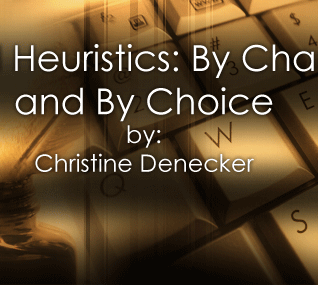


"Making the movie kept making me think about audience." Along with increased focus, the digital heuristic, as well as the movement between digital and traditional composing forms, also seemed to pique students’ awareness of audience in each medium. One student in my College Writing II class reflected, “Both multimedia and traditional literacy focus on conveying a certain message to their audience. Multimedia uses visuals, sound effects . . . to impact their audience. Traditional literacy uses descriptors, metaphors and other tools to convey their message.” Another student in that class noted that “The characteristics that multimedia and traditional literacy share is that they both use a text form that helps the viewer understand, either by a long description [traditional] or single words accompanied by pictures and drawings [digital].” Still another student explained that to be successful “in both you have to understand people and the audience that will be reading or viewing your work,” and one student compared the digital to the traditional by stating that “In each case the composer must consider the audience, how ideas relate, and the use of transitions. This same student noted that the digital “can move an audience more quickly as they can relate to an image better than a page-long description of the same thing.” Motivation, focus, audience—while the digital heuristic may or may not have directly affected each of these aspects among student writing in this pilot, the metacognitive element of the Redesign did appear to yield some evidence of critical thought indicative of analysis and evaluation found at the top of Bloom’s Taxonomy of Learning Domains. In particular, while many of the student responses recorded here tout the benefits of digital composition, a number of the respondents’ reflections reveal that those benefits were more directly related to the role of writer rather than that of reader. Specifically, a number of students remarked on the limitations of digital composition for the “reader”: one of my students stated, “I think multimedia limits imagination for the viewer if a story or fictional piece is being told.” Similarly another student commented that traditional forms allow “the mind of the reader” to “wander longer than a viewer of multimedia literacy.” This same student went onto state that “the mind of viewer doesn’t get to work as much” when reading the digital. Still another student, this time in my colleague's class, made the claim that traditional compositions “do have the advantage of allowing the reader to use his/her own imagination to concoct an image or a scene.” And yet another stated that traditional forms “expect more” from the writer, “because only the best of writers can portray images using words so the reader can easily understand.” Thus by traversing the two mediums, students had occasion to compare and contrast, reflect and analyze, and eventually evaluate the merits of both digital and traditional composition forms. "Doing this project was beneficial to my essay writing." This is not to say that all students came to find new value in the traditional through the lens of the digital heuristic—some claimed that “sometimes visuals as well as words are needed to convey a message,” or that “seeing a picture can provoke emotions 1000 words may not.” However, a new understanding of the place of each, purpose of each, and complementary nature of each did seem to surface among the majority of students. According to one, while traditional composing calls for the author to write, and digital composing calls for the author to provide (in most cases) visuals, “this does not make one easier than the other; in each there are many factors essential to creating a thoughtful product.” Another student stated that “the movie project was good because it made us think on a deeper level about our written work.” These thoughts are best summed up by the student in my colleague's course who concluded: “The combination [my italics] of both traditional and multimedia [forms] can produce the most profound effects on the ‘readers.’” For me (and for my colleague who participated in this pilot study), the potentialities of the digital heuristic reach far beyond its original intent. At the very least, this “by chance” and “by choice” meeting between traditional and digital served to meaningfully engage first-year writing students in a specific assignment. At the most, this encounter opened a doorway to invention, to composition, and to thought. What lies beyond that threshold calls for further exploration.
|